- Rs 18,000 as assured monthly income for farmers or 2.8 times their current average, increase official markets, storage and refrigeration
- Refresh the 27-year-old national education policy, ensure 97% of students who enroll in school stay on till high school, instead of 79.2% who currently do.
- Reform labour laws, so 40 million small enterprises that hire fewer than ten workers can expand.
- An independent environment protection agency that can clean up poisoned water and toxic air in India’s cities, 14 of which occupy the top 20 spots globally of cities with worst air.
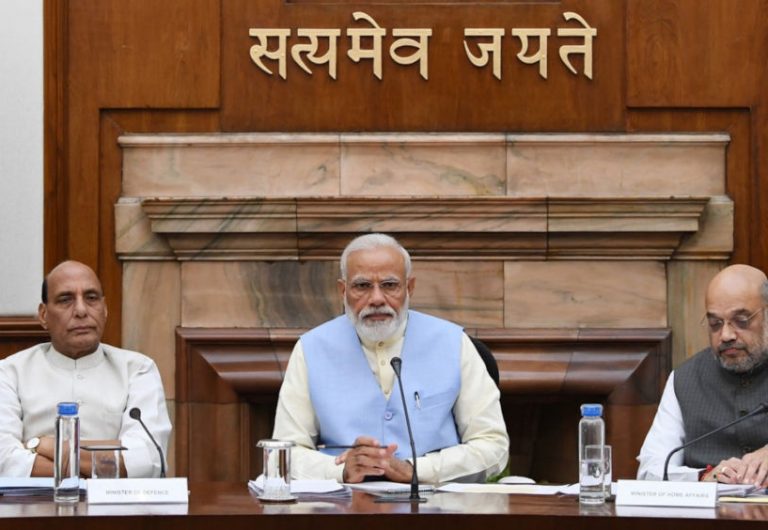
Prime Minister Narendra Modi during the first cabinet meeting at the Prime Minister’s Office in New Delhi on May 31, 2019.
These are some suggestions for the National Democratic Alliance (NDA), as it prepares for its second consecutive term in office, according to experts and IndiaSpend research.
With 42% of India’s land area declared as drought hit, the farm crisis may deepen, and so our recommendations focus on making farming more rewarding, while simultaneously getting millions off the land, at a time when the country faces its worst unemployment in 45 years.
For jobs to be created, experts recommend a raft of labour reforms, so that small, unorganised enterprises, which currently employ 92% of India’s workforce, can expand without bureaucratic interference or requirements.
For this workforce to be more qualified, we recommend a revamp of the education system, the failure of which begins by failing to retain about three-fourths of students till high school and continues in a quality of education that leaves millions unprepared for employment.
Our other focus is on quality of life, which is related to labour productivity: India’s cities have some of the world’s most toxic air, and about 70% of the nation’s water is polluted and 600 million–according to a 2018 government think tank report–face “high-to-extreme” water stress.
Our eight-sector analysis:
Agriculture: Infrastructure, incomes
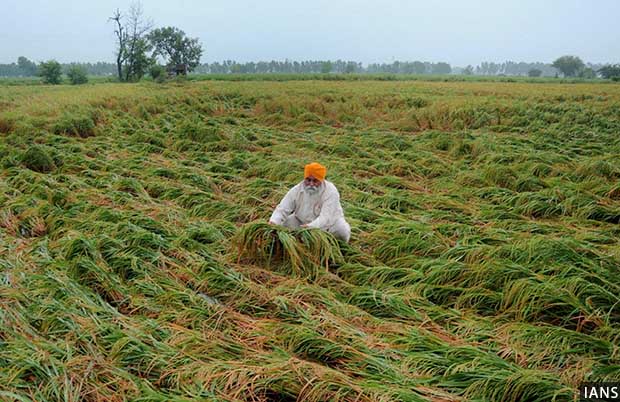
- Investing in more storage and refrigeration facilities in a country where a third of farm produce spoils for lack of them.
- Increase mandis–markets authorised to sell farm produce–from 7,600 to 42,000 nationwide, so that there is one within a radius of 5 km.
- Government needs to make farmers aware about its own programmes, such as crop insurance, which will be of use only if they are told about crops that need insurance.
One of the major suggestions to make agriculture more remunerative is to re-calculate what is called the minimum support price (MSP) to farmers, the price at which the government buys farm produce. But, as food-policy analyst Devinder Sharma pointed out, even if that is done, no more than 6% of farmers would benefit. He is right; this 2015 report backs that datum.
Sharma recommended “assured income packages” to farmers, worth Rs 18,000 per family. The income package, he said, should arrive as a top-up over the monthly average income a farm family gets by district. The average income of an Indian farmer is Rs 77,976 per year, or Rs 6,498 per month, according to 2017 data, which the government wants to double by 2022.
It its 2019 election manifesto, the Bharatiya Janata Party (BJP) has promised a Rs 25 lakh crore agricultural investment, 75% more than the budget for 2018-19. Between 2012 and 2015, India invested no more than 0.4% of gross domestic product (GDP) on agriculture, which supports 60% or 770 million people.
There are many ways to direct this investment: increase irrigation access from the current 35% of farms–the BJP manifesto promises irrigation to all farms by December 2019, an impossible task; or improving storage and refrigeration facilities in a country where 30% of produce is spoiled according to a 2013 report.
Harvest and post-harvest loss of India’s major agricultural produce were estimated at Rs 92,651 crore in 2016, as three of five components–pack houses, ripening chambers and reefer vehicles–in the cold chain remained almost entirely without funding, IndiaSpend reported on August 11, 2016.
New investment can also be directed at the expansion of mandis, or farm-produce markets, which are supposed to offer fair prices and immediate returns to farmers, said Sharma, from 7,600 to 42,000 nationwide, so there is one in a radius of 5 km instead of the 464-km average gap that currently separates each.
The government does need to provide “assured and stable prices” for vegetables, such as onions and tomatoes, and agricultural extension and information, said Madhura Swaminathan, a professor at the economic analysis unit of the Indian Statistical Institute.
“We need to make the farmers aware about new technologies and schemes,” said Swaminathan. “A scheme like crop insurance will benefit people only if they are informed about which crops need insurance. And the government needs to intervene at the right time to stabilise prices.”
“Now that the BJP government is elected in most of the states, it should carry out key marketing reforms (remunerative prices to farmers, electronic trading facilities, boosting agro-processing facilities and crop insurance),” said Sukhpal Singh, professor and chairperson, Centre for Management in Agriculture at the Indian Institute of Management, Ahmedabad.
Economy: Jobs, cities, reforms
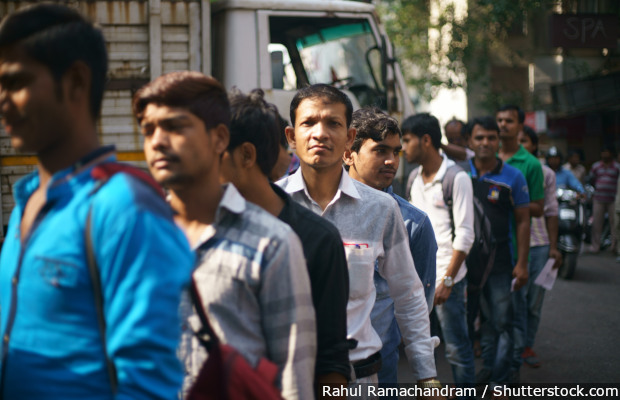
- 100 new cities that will absorb millions of people moving out from agriculture.
- Create jobs in the infrastructure and services sector through the Mahatma Gandhi National Rural Employment Guarantee Scheme (MGNREGS) instead of doling out money.
- Reform land and labour laws, remove inherent conflicts in them, so that industries can hire more workers.
India’s unemployment rate is at a 45-year high, according to National Sample Survey Office (NSSO) data, released on June 1, 2019.
Unemployment is highest among educated people, 17% among women and 20% among men of whom did not have a job in rural areas, according to the NSSO data.
“The biggest issue before us is unemployment,” said Anupam Manur, Economic Research Fellow at Takshashila Institution. “We need at least 14-15 million jobs annually, but we are able to create only 1.5 million jobs. That is a huge gap.”
The unemployment rate for rural male youth (aged 15-29) rose from 5% in 2011-12 to 17.4% in 2017-18; for rural women in the same age group, it rose from 4.8% in 2011-12 to 13.6% in 2017-18, according to the NSSO data.
A majority of the people seeking employment will come from rural India, whose cultivators and agricultural labourers account for more than half of India’s workforce and contribute to no more than 16% of GDP. These millions will need to be accommodated in new cities, and older cities will require infrastructure expansion.
“We have more people doing agriculture than we need, and it’s a form of disguised unemployment,” said Manur. “The solution is urbanisation and industrialisation.”
The BJP manifesto promises, for instance, metros in 50 cities and piped cooking gas in major tier 1 (more than 100,000 people) and tier 2 (50,000 to 99,999 people) cities, of which there are 34, Manur suggested that the government might need to create 100 new cities.
That will not be easy with land difficult to acquire: Despite the supposed focus on infrastructure projects, 453 projects were stuck due to land-acquisition problems, the Economic Times reported on December 13, 2018.
These challenges emerge at a time of slowing investments, declining growth and rising bad debts.
Gross non-performing assets (NPAs) in Indian banking were Rs 8 lakh crore and Rs 10.3 lakh crore, in March 2017 and March 2018, respectively, IndiaSpend reported in February 2019, as the share in NPAs of large borrowers rose.
“We are witnessing growth due to consumption and government spending and not due to investments,” said Manur. “This is not sustainable.”
The government needs to create jobs in the infrastructure and service sector through the MGNREGS programme instead of doling out money, said R S Deshpande, former director, Institute for Social and Economic Change, a think tank in Bengaluru.
Deshpande said conflicts between land and labour laws require resolution. “Our labour laws [discourage] organisations from becoming big,” he said. “In a country that has so many hands, these organisations choose to be capital intensive and work with more machinery to avoid the labour laws.”
| Bharatiya Janata Party Manifesto: A Deconstruction | |
|---|---|
| Issue | Promises And Reality |
| Agriculture | “Doubling farmer income by 2022. [Currently Rs 6,498 per month]” |
| Pradhan Mantri Kisan Samman Nidhi (Prime Minister’s farmer recognition scheme) aims for 120 million “small and marginal” farmers–with less than 2 hectares of land–to get Rs 6,000 per year as minimum income support. | |
| “Rs 25 lakh crore investment in rural development (including agriculture and irrigation) till 2022. [The 2018-19 budget provided Rs 14.34 lakh crore]” | |
| Achieve 100% irrigation [Currently, 34.5% of farmland is irrigated] | |
| “Digitisation of land records.[86% of land records nationally computerised]” | |
| “Nal se jal, or water from the tap; piped water to every household by 2024.[Currently, 15% of rural homes have piped water]” | |
| Education | “200 centrally run Kendriya Vidyalayas (KVs) and Navodaya Vidyalayas (NVs).[The government opened 93 KVs and 32 Jawahar Navodaya Vidyalayas JNVs between 2014-15 and 2017-18]” |
| “50% increase in engineering, law, science and management seats.[There are 5,523 engineering colleges]” | |
| Child care | “Increase the capacity of the national creche programme three times by 2022, with a special focus on the needs of parents employed in the unorganised sector. [There were 290,925 creches in 2017]” |
| “Reduce malnutrition by at least 10% over the next five years, doubling the rate of reduction of malnourishment. [38.4% of Indian children are stunted, 51.2% of women are anemic]” | |
| “Increase the honorarium of ASHA and anganwadi workers–women and childcare assistants. [Currently the honorarium is Rs 4,000 per month]” | |
| “33% reservation for women in parliament and state assemblies through a constitutional amendment. [14% of MPs are women in the newly elected Lok Sabha]” | |
| Health | Telemedicine and diagnostic laboratories in health and wellness centres by 2022 to ensure quality primary medical care to the poor. [There were 8,030 health and wellness centres in February 2019] |
| One medical college for every three parliamentary constituencies. One medical college or post graduate medical college in every district by 2024. To start with, 75 such medical institutes will be set up by 2022. | |
| “Double the number of MBBS and specialist doctors by 2024. [There were 1 million registered allopathic doctors in 2017, each doctor served 11,039 people, against the World Health Organization norm of 1 per 1,000]” | |
| “Full immunisation for all children and pregnant women by 2022.[62% of children under two received all the vaccines, and 89% of mothers were immunised against neonatal tetanus in 2015-16]” | |
| “Eliminate tuberculosis” [India has 2.74 million tuberculosis cases, highest in the world, accounting for 27% of global burden]” | |
| Governance | Simultaneous elections in Centre and states |
| Rashtriya Gram Swaraj Yojana (national rural self-governance scheme) to enhance skills of members of local government institutions. | |
| Fast-track courts at all levels of judiciary. [Currently, there are 708 fast-track courts] | |
| Environment | “Treat 100% of waste water from towns along Ganga and increase the flow of water. [Currently, 48% of wastewater is treated; 149 dams, 107 barrages and weirs impede the river]” |
| Achieve 175 GW of renewable energy by 2022. [Currently, about 78 GW] | |
| “Convert the National Clean Air Plan into a mission and focus on 102 most polluted cities; reduce air-pollution levels in each of the mission cities by at least 35% over the next five years.” | |
| Infrastructure | Capital investment of Rs 100 lakh crore in infrastructure by 2024 |
| “60,000 km of new national highways over the next five years, doubling length by 2022. [India had 132,499 km of national highways in March 2019, adding 6,864 km each year on average between 2014 and 2018]” | |
| Double the number of functional airports from 101 by 2024 | |
| Double port capacity by 2024 | |
Sources: Bharatiya Janata Party, 2019; IndiaSpend research
Sanitation: Beyond declarations and claims
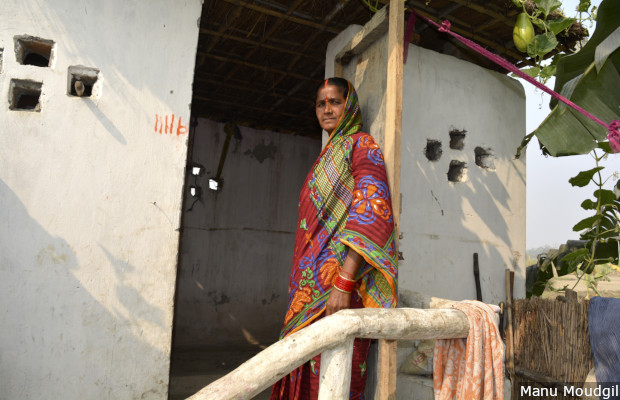
- Households that did not get government subsidies to build toilets should now get them
- Beyond certifying villages, towns and states as being free of open defecation, the government must now focus on getting people to use toilets
- Focus on educating citizens on toilet pits, that they fill up in five years, not two months, and that anyone can empty them, not just scheduled castes
More than 99% of Indian households now have toilets and 30 states and union territories have been declared “open-defecation free” (ODF), according to the Swachh Bharat Mission (SBM)–Gramin or rural website. The mission to clean India added 91 million toilets over five years to 2019, increasing toilet access from 39% of the population to 99%, the government has claimed.
“Now is the time for the government to promote use of toilet now that bulk of the construction is done,” said Aashish Gupta, research fellow at the Research Institute for Compassionate Economics, a think tank, which found in a 2019 study that despite an increase in the construction of toilets, 44% of people in north India still defecated in the open.
It is almost certain that by October 2019, the national SBM deadline, India will be declared ODF. But many households clearly do not have toilets, working or otherwise, in areas declared ODF, as FactChecker reported in 2018 (see here and here). A third of households in 120 villages declared ODF in Gujarat did not have access to toilets, the government auditor, the Comptroller and Auditor General, reported in September 2018.
The government needs to acknowledge that sanitation is “a continuous process” and continue with programmes that educate citizens on building and using toilets. “We know that states like Rajasthan and Madhya Pradesh, which have been declared open-defecation free, have no SBM activities going on,” said Gupta.
There are concerns about how toilet pits will be emptied, for instance. In Uttar Pradesh, the government has been “fairly successful” in communicating that the pits get filled in five years and not in two months as people thought, said Gupta.
“It is time that they (government) show that the pits can be emptied by anyone,” said Gupta, referring to a stigma that forces scheduled castes to do the job. “It would great if (Prime Minister) Modi can empty a pit, reducing the stigma, and spread the message of safe decomposition of sludge.”
Health: More money, better use of money
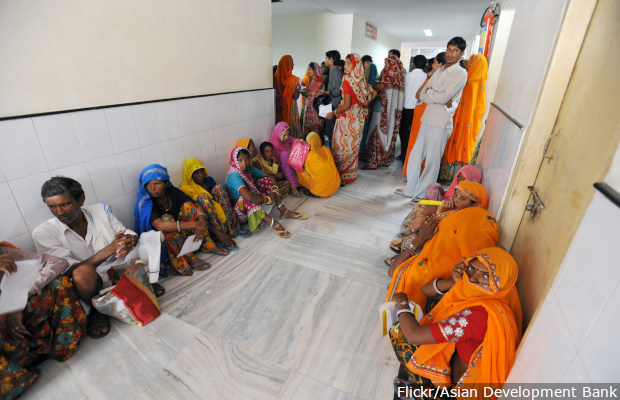
- Find funding to increase public healthcare spending from 1.4% of GDP to 2.5% of GDP
- Improve utilisation of central healthcare funds by the states: Only 32% of National Health Mission funds were spent over five years to 2016.
The biggest challenge for the new government would be finding funding for healthcare, said Oommen C. Kurian, public health fellow at Observer Research Foundation, a think tank.
“It is widely known that our public healthcare funding should be increased to at least 2.5% of GDP, but over the last decade governments have only been able to reach 1.3% to 1.4% of GDP,” he said.
This funding is important because India has the world’s highest population of stunted children–short for their age–and the country’s failing primary healthcare and overburdened tertiary care are ill-equipped to handle the crisis of childhood malnutrition, leaving India unable to fulfil its national potential, IndiaSpend reported in January 2018.
“Until the federal government in India takes health as seriously as many other nations do, India will not fulfil either its national or global potential,” said a November 2017 editorial published in the Lancet, a medical journal.
“This is the bottom line: if you walk into the future economy with 40% of your workforce having been stunted as children, you are simply not going to be able to compete,” Jim Yong Kim, president of World Bank, said on his visit to New Delhi in June 2016.
Another challenge for the government is to improve the utilisation of central funding to states, a proportion of which returns unutilised.
National Health Mission (NHM) funds unspent by states over five years to 2016 increased by 29%, according to a 2017 audit by the government’s auditor, the Comptroller and Auditor General, which also reported delayed transfers and misallocation of these funds. The NHM, launched in 2005, is India’s largest health programme aimed at providing universal access to healthcare. One of its primary missions is to improve maternal and child health and control communicable and non-communicable diseases.
India accounts for 17% of global burden of maternal deaths, non-communicable diseases made for 61% of deaths in 2016, communicable diseases such as leprosy and malaria are yet to be controlled and 55 million Indians slipped into poverty in 2011-12 because of health catastrophes they could not afford.
“Health is a state subject, so there has to be a broader consensus between Centre and states involving all major political parties when it comes to healthcare,” said Kurian.
For example, despite agreeing to be part of Pradhan Mantri Jan Arogya Yojana, the insurance arm of the Ayushman Bharat initiative, many states over the last few months since its launch in September 2018 have opted out due to political reasons, “This causes unnecessary delays and impacts access, especially of the poorer households,” said Kurian.
Some 2.4 million Indians die of treatable conditions every year, the worst situation among 136 nations studied for a report published in The Lancet in 2018.
Poor care quality leads to more deaths than insufficient access to healthcare–1.6 million Indians died due to poor quality of care in 2016, nearly twice as many as due to non-utilisation of healthcare services (838,000 persons), IndiaSpend reported in September 2018.
Women: More state support
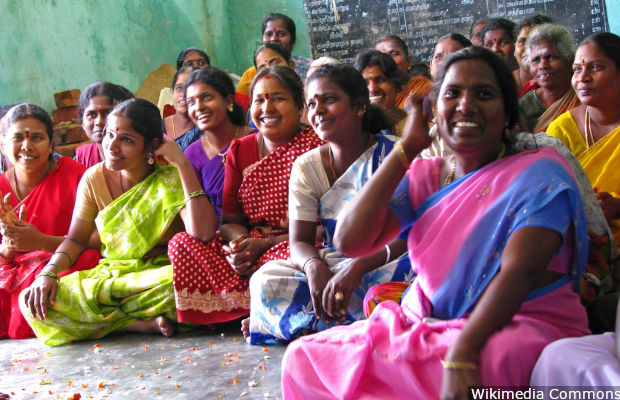
- Women in rural areas must get access to education, skilling and digital and financial literacy.
- The government must increase the budget for shelter homes and court infrastructure.
- Women must feel safe in their work spaces and on their commute to work
The unemployment for rural women aged 15-29 rose 8.8 percentage points over six years to 2018, according to 2019 NSSO data. For educated rural females, the unemployment rate ranged from 9.7% to 15.2% between 2004-05 and 2011-12, rising to 17.3% in 2017-18.
The share of women in the paid workforce has been declining across major sectors over the 11 years to 2015, according to a September 2018 report published by the Centre for Sustainable Employment, an arm of the Azim Premji University. In agriculture, the share of women dropped by six percentage points from about 35% in 2004 to 29% in 2015. It dropped by four percentage points in manufacturing, from 26% in 2004 to 22% in 2015.
The government must step in to stop the decline in women’s participation in the workforce, said Jayati Ghosh, professor of economics at Delhi’s Jawaharlal Nehru University. Her suggestions include: improving work conditions, more public-sector employment, increase minimum wages and improve rural- and urban-employment schemes.
“At 17% of GDP, the economic contribution of Indian women is less than half the global average, and compares unfavorably to the 40% in China, for instance,” said Annette Dixon, World Bank South Asia vice president in March 2018. “India could boost its growth by 1.5 percentage points to 9 percent per year if around 50% of women could join the workforce.”
That can happen if the government make extra efforts. Experts cited two barriers to the decline of women in the workforce: attitudes and infrastructure gaps.
“Safe transport, decent working conditions and emphasis on decent employment should be the focus of the government,” said Aparna Sivaraman, programme officer at the Public Affairs Centre, a Bengaluru think tank. “Additionally, women in rural areas must be provided access to education, skilling, as well as digital and financial literacy. This actionable knowledge will help them to access and be part of better employment opportunities.”
Education: Arresting drop-out rates, improving quality
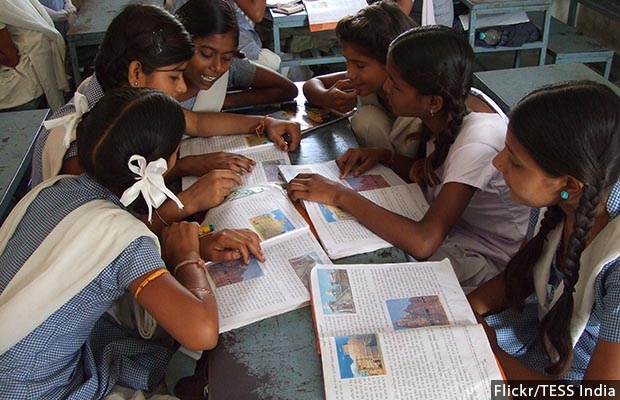
- Increasing enrollment in higher education to match the rate at school level
- Increased funding for state public universities, which cater to over 50% of students
- Larger budgets and support for the education of marginalised communities, children with special abilities and higher education of women.
One of the government’s foremost challenges is to make sure that Indian children stay in schools, experts said. In 2015-16, 97% of children were enrolled in a primary school, according to government data. This rate, called the gross enrollment rate, drops to 79.2% in grades IX and X and to 56% by grades XI and XII.
“The government should primarily focus on ensuring that children get to complete their education along the entire continuum from preschool till the higher-secondary level,” said Puja Marwaha, CEO of Child Rights and You, an NGO working for child rights.
“Unless we get students to stay in schools until higher education, we will not be able to utilise the demographic dividend to the fullest,” said Antara Sengupta, research fellow at ORF.
India’s demographic dividend is the world’s largest population of young people aged 15 to 24–241 million or 18% of all Indians–and is ahead of China’s 169.4 million, according to a 2017 report by the United Nations (UN) department of economic and social affairs.
Yet, India’s expenditure on higher education as a percentage of its total budget has remained largely stagnant, hovering around an average 1.47% over 12 years to 2018-19, the UN report said. Over 70% of 18- to 23-year-olds in the country are not enrolled in a higher educational institute, according to the All India Survey on Higher Education, 2017-18.
Education has been strongly linked to poverty alleviation. On average, one year of education is associated with a 10% increase in wage earnings, said a 2014 United Nations Educational, Scientific and Cultural Organisation (UNESCO) report. It also protects the working population from exploitation by increasing the band of opportunities, improves health, reduces income disparities and drives economic progress, said the report.
To expand education, government also needs to extend the Right to Education to include pre-primary classes (nursery and kindergarten) and higher secondary classes (grades IX to XII), said Marwaha. The extension of the RTE Act to include children from ages three to 18 is stated in the New Education Policy, 2019, submitted to the education ministry by a policy committee on May 31, 2019. The policy was released to get feedback from the public. After getting feedback from general public, and after consulting state governments, the policy will be finalised by government, a press release from the ministry said.
This policy, when passed, will replace the National Policy on education, which was framed in 1986 and modified in 1992. A new, comprehensive policy with “clear, set goals” is important to set the roadmap for educational reforms, said Sengupta.
India also needs to improve the quality of state public universities, where 50.7% of students study, said Sengupta.
Marwaha also emphasised the need for inclusive education. The new government needs to focus on resources and support for traditionally marginalised groups, such as girls, children from dalit, adivasi and others and also for children with special abilities.
India also needs to address the gender gap in higher education, said Sengupta. No more than a third of students in India’s top universities are women, the Times Higher Education (THE) Survey reported in May 2019, among the lowest ratio in a group of 20 countries that feature more than 10 universities in THE’s world university rankings.
Forest and lands: Protect local rights and the law
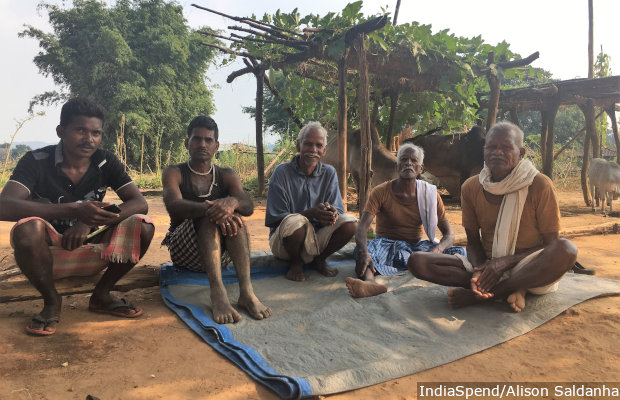
- Recognise and protect the authority of gram sabhas (village councils) to govern community forest resources with the full participation of women.
- Fund gram sabhas to manage forests that are mostly handled by forest departments.
- Do not transfer forest land by violating the law and rights of gram sabhas; respect their free, prior and informed consent.
The Forest Rights Act, which legalised the land rights of forest-dwellers in 2006, is critical to the rights and livelihoods of at least 200 million Indians–as much as the population of Brazil–of whom 90 million (45%) are tribespeople, IndiaSpend reported on March 20, 2019.
This is why it should be the new government’s priority to implement the FRA. Individual and community rights of scheduled tribes and other traditional forest dwellers, including the rights of women, particularly vulnerable tribal groups–with the lowest development indices–displaced communities, nomadic and pastoralists should be settled, said Tushar Dash, a member of Community Forest Resource–Learning and Advocacy (CFR-LA), a network of nonprofits working on the FRA.
The BJP government has been criticised for not protecting the rights of tribespeople during court hearings that led to a February 2018 Supreme Court order that forest dwellers whose claims had been rejected by respective state governments be evicted. The order was later put on hold.
The order dilutes and undermines the FRA, said Dash. The government should, on priority, review all land-title claims under FRA to ensure that 1.8 million “wrongful rejections” are corrected and land rights restored, he added.
At least 40 million hectares of forest land–more than 50% of India’s forest area, larger than the area of Uttar Pradesh and Chhattisgarh combined–is governed by the FRA and issues related to the rights and livelihoods of forest-dwellers and tribespeople. At least 170,000 villages, a fourth of all Indian villages, are eligible for rights under FRA, we reported.
Environment: A new regulator for many crises
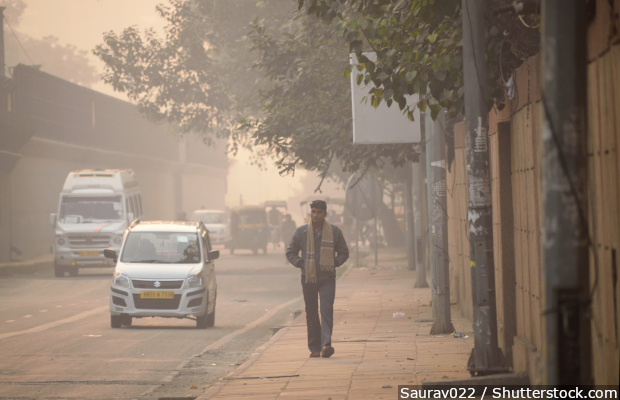
- The government should set up an independent environmental regulator or independent environmental protection agency, divorced from the environment ministry, a conscience keeper of sorts.
- The government must simplify laws governing coastal and ocean issues and consider them together.
The one very important step that the new government should take is a complete overhaul of India’s environment ministry, said Sanjay Upadhyay, an environmental lawyer and founder of the Enviro Legal Defence Firm (ELDF), India’s first environmental law firm.
“We have been talking about an independent environmental regulator or independent environmental protection agency for a long time now, which is above the ministry and has a conscience-keeper role,” said Upadhyay. “Closed-door, non-consultative, officialdom-driven image of the environment governance in the country will have to be changed.”
Eight of 10 Indians breathe toxic air, which killed 1.2 million Indians in 2017–more than the death toll caused by tuberculosis, diarrhoea, pneumonia and malaria the same year. More than 100 Indian cities have been identified by the government to be India’s most polluted, yet the crisis deepens.
In 2019, after three years of deliberations, the government announced a flawed national programme that lacks clear sectoral targets and timelines to reduce air pollution by 20-30% by 2022, a promise made in the BJP manifesto.
The issues of air pollution in Indian cities and the pollution of water bodies need “urgent attention and action”, said Upadhyay.
India’s water is similarly in crisis, with 70% of it polluted, at a time when 600 million face “high-to-extreme” water stress, according to June 2018 report from Niti Aayog, a government think tank.
Another crisis has been unfolding along India’s coastline of 7,500 km–nearly three-and-a-half times the distance between Ahmedabad and Kolkata–divided almost equally on the east and the west of the country. Along it are nine states, two union territories (UT) and two island territories. Of the country’s 1.28 billion people, 560 million, or 43%, live within these coastal territories.
Millions living on India’s coasts are threatened, as India has lost 33% of its coastline to erosion in 26 years between 1990 and 2006, according to a report released in July 2018 by the National Centre for Coastal Research (CCR) in Chennai, which is mapping changes to India’s shoreline.
India’s coasts are under attack both from man-made activities–such as growing construction, damming of rivers, sand mining and destruction of mangroves–as well as natural causes linked to climate change such as rising sea levels, according to the CCR report.
“Till now we have been tinkering with government notifications here and there, but that is not enough,” said Upadhyay, urging “a holistic approach”, starting with the simplification of the Coastal Regulation Zone Act, which has been amended 76 times over 17 years to 2018.
India’s environment must be better protected, but environmental clearance procedures need to be made simple. “Compliance has to become cheaper than non-compliance,” said Upadhyay. “Currently, it is the other way round. Unless you make compliance cheaper and more broad-base people are going to find other ways of bypassing the process.”
We welcome feedback. Please write to respond@indiaspend.org. We reserve the right to edit responses for language and grammar.
Courtesy: India Spend
